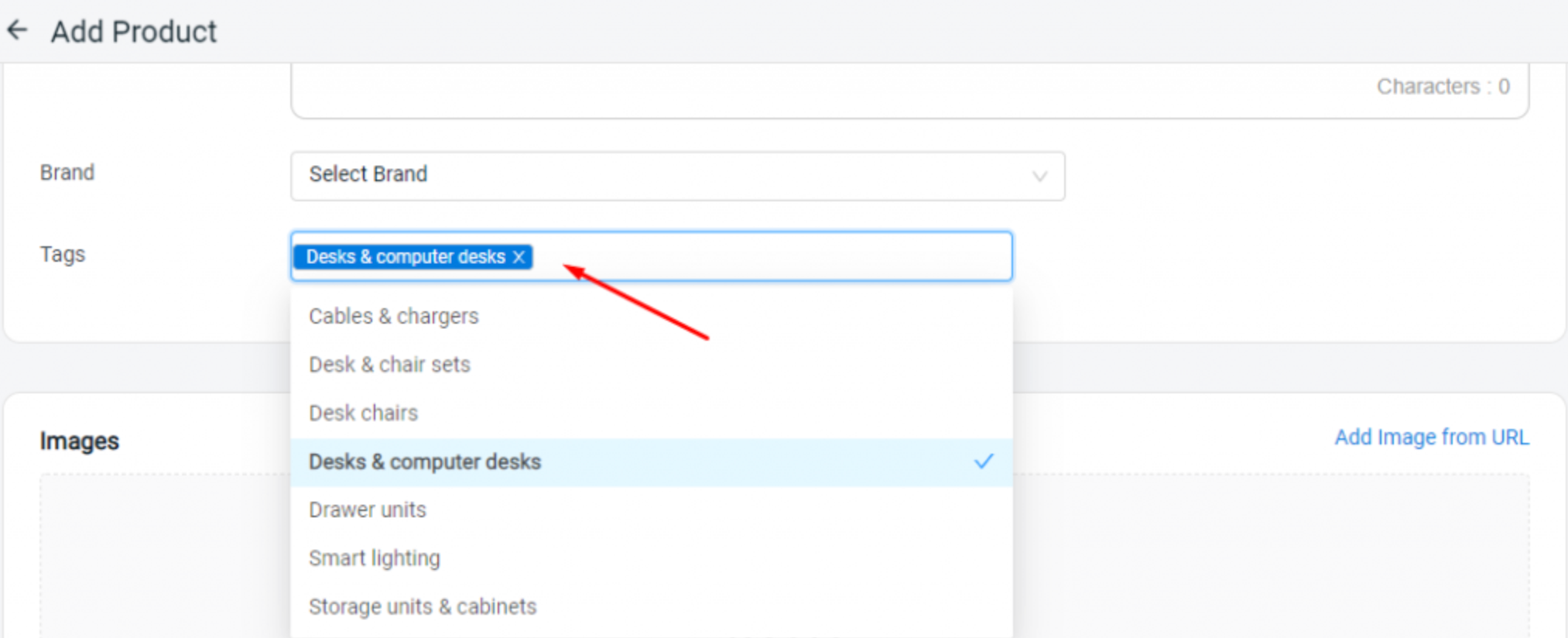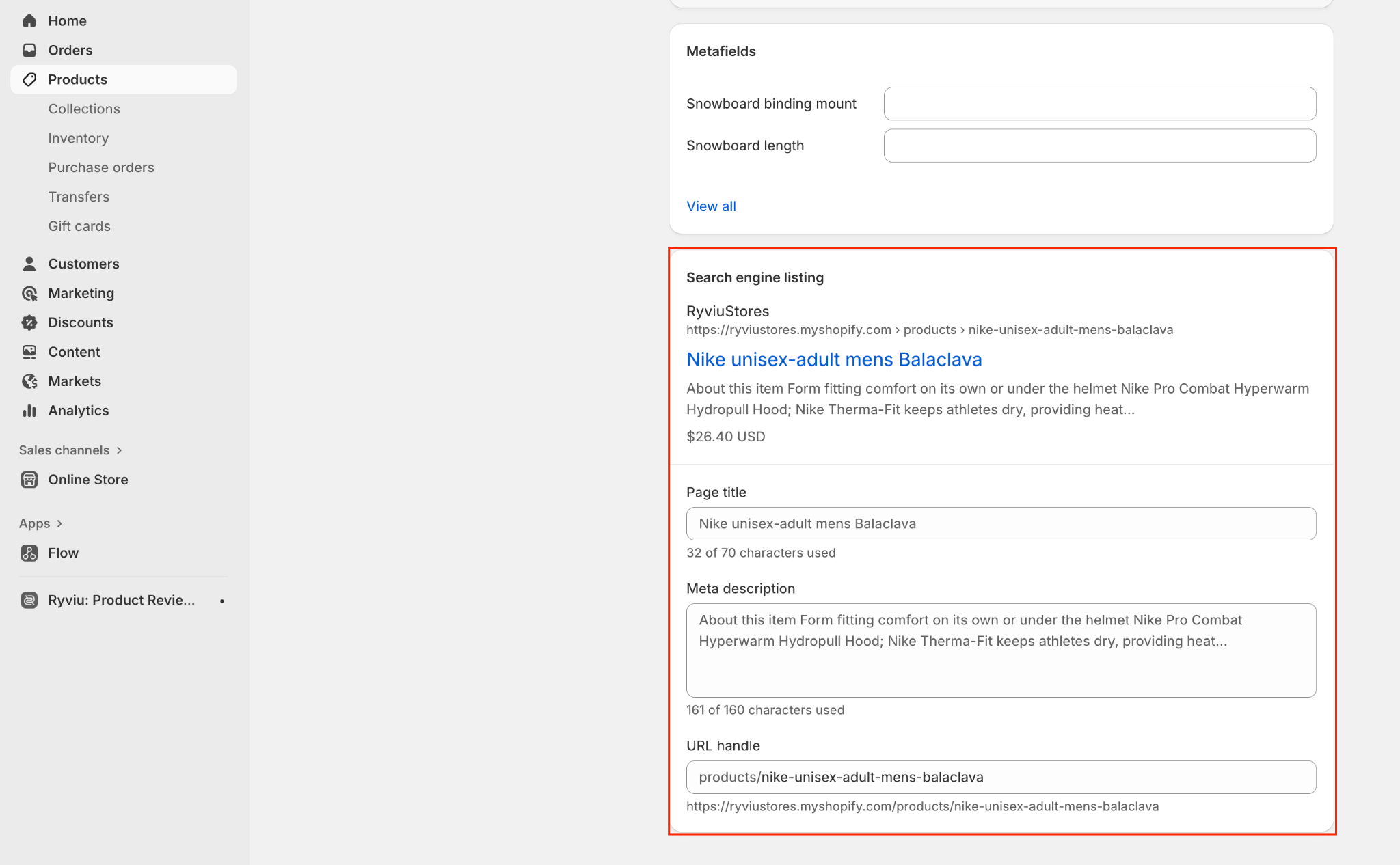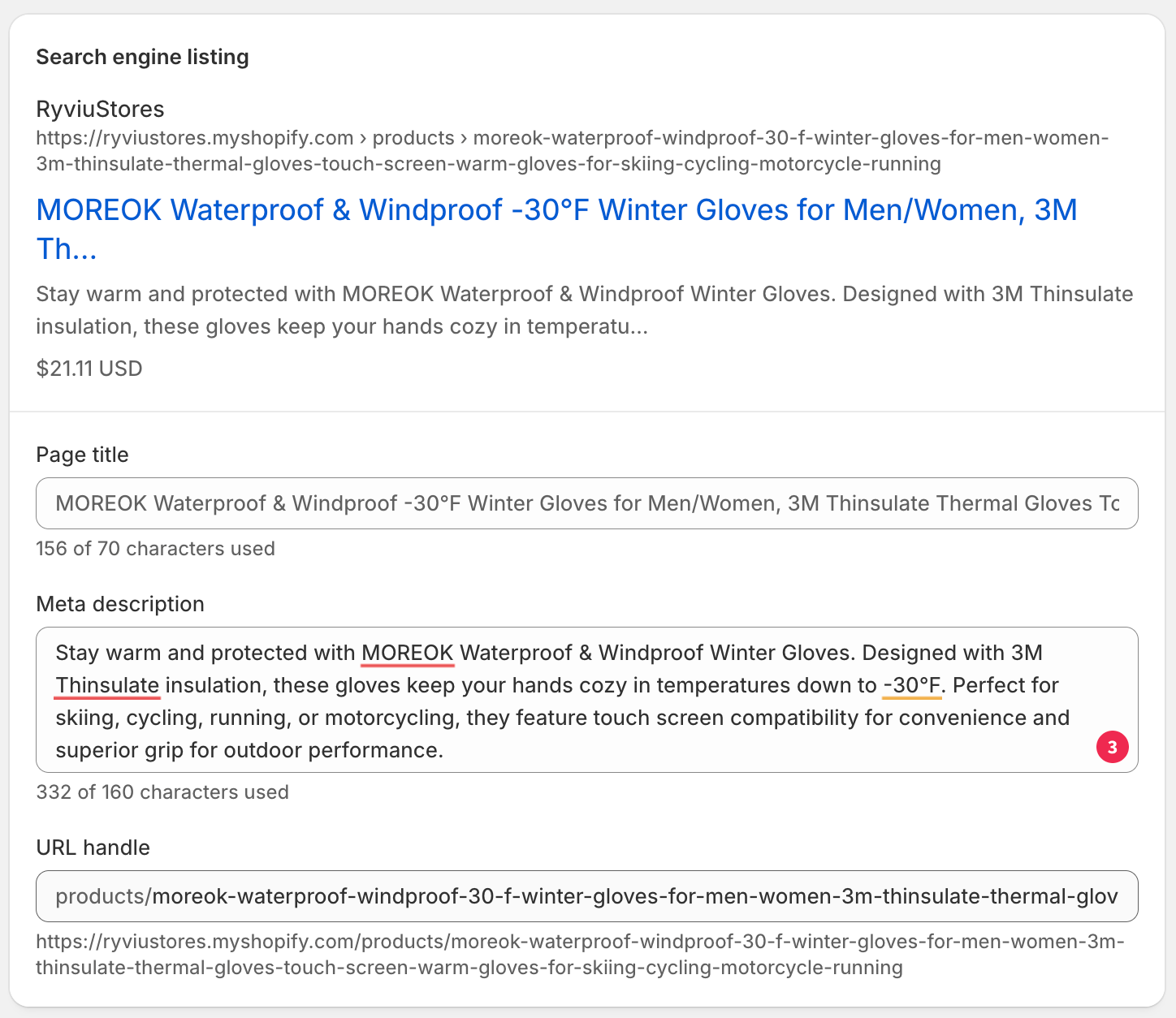
Optimizing your Shopify store for search isn’t just about keywords in product titles and descriptions, it’s also about using product tags and metadata effectively. These elements work behind the scenes to make your products more discoverable both in on-site searches and on Google. Let’s explore how you can strategically use tags and metadata to boost visibility and conversions.
Product tags are short labels that categorize your items based on characteristics like type, color, material, or collection. They help both you and your customers organize products and make search filtering more intuitive.

Metadata, on the other hand, refers to information that search engines and browsers use to understand your page, like meta titles and meta descriptions. These don’t usually appear on the page itself but play a crucial role in SEO rankings and click-through rates.

Together, tags and metadata form the foundation of an optimized product structure that improves both user experience and search performance.
Tags are more than just an organizational tool, they’re powerful SEO assets. When implemented strategically, they can improve both internal search and navigation.
While tags optimize your internal search, metadata primarily affects how your store appears on Google. Well-written metadata can dramatically increase your click-through rate from search results.
One of the best things about Shopify is that it allows you to manage both product tags and metadata directly from your dashboard with no coding knowledge required. Whether you’re launching a new store or improving your existing product listings, these simple steps can help you optimize your store for better search visibility and user experience.
Product tags help categorize your products and improve the internal search functionality on your site. You can easily add or edit them directly within the Shopify admin:

To make things more efficient, Shopify also allows you to add or remove tags in bulk. Select multiple products from your product list, click Bulk actions > Add tags, and apply the same tags across similar items. This is especially useful for stores with large catalogs or seasonal promotions.
Pro tip: Use a consistent tag naming convention. For example, choose either “T-shirt” or “tshirt” and stick with it across all products. This ensures your search and filtering systems stay accurate and avoid duplication errors.
Metadata plays a critical role in how your products appear on Google and other search engines. You don’t need to know HTML or edit code to manage it on Shopify.
Here’s how to edit metadata for each product:

After saving, Shopify automatically adds your meta title and description to the product page’s HTML, making it SEO-friendly without requiring manual code edits.
Pro tip: Avoid duplicating metadata across multiple products. Each product should have unique titles and descriptions to help search engines distinguish between pages and rank them appropriately.
Search engines can’t “see” your images, they rely on alt text (alternative text) to understand what’s in them. Alt text improves your image SEO and ensures accessibility for all visitors, including those using screen readers.
To add alt text in Shopify:

Pro tip: Keep it descriptive but natural, avoid keyword stuffing. Alt text that reads like normal language helps both SEO and user accessibility.
Optimization is not a one-time task. As your product range evolves and search trends change, regularly revisit your tags and metadata to keep them relevant.
Performing this maintenance once every few months helps your store stay competitive and ensures that customers (and Google) always find the most up-to-date information about your products.
By following these no-code steps, adding meaningful tags, writing optimized metadata, improving image alt text, and using smart automation tools, you can ensure your products are easier to find, more appealing in search results, and better positioned to convert visitors into buyers.
To make your Shopify store more visible and user-friendly, you need to apply them strategically. The following best practices will help you create a consistent, optimized structure that improves both your search rankings and your customers’ browsing experience.
Tags should reflect the key attributes customers might search for, such as product type, color, size, or style. Avoid vague or overly general terms that don’t add value. Instead of “item1” or “collectionA,” use clear, descriptive tags like “vegan skincare,” “handmade jewelry,” or “cotton dress.”
This ensures that your store’s internal search and filters connect users with the most relevant results, leading to higher engagement and sales.
Consistency in your tag naming conventions prevents confusion for both shoppers and search engines. For example, decide early whether to use “T-shirt” or “tshirt,” and stick with it across your catalog. Inconsistent tags can fragment your data and cause products to be excluded from certain searches or collections.
To maintain uniformity, create a tagging guideline document for your team. This helps everyone apply tags correctly and ensures your filters, collections, and SEO structure remain clean and well-organized.
Adding too many tags can dilute search relevance and clutter your backend. Focus on quality over quantity, around 5 to 10 carefully chosen tags per product is ideal. Each tag should serve a clear purpose, either for filtering, SEO, or internal organization.
Also, periodically audit your tags to remove outdated or redundant ones, especially if your product lines evolve seasonally or stylistically.
Your metadata, especially meta titles and descriptions, plays a vital role in how your pages appear on search engines. Every product page should have a unique meta title and meta description that accurately reflect its content while integrating primary keywords naturally.
Avoid keyword stuffing; instead, write for humans first and search engines second. Compelling, natural-sounding copy increases click-through rates and strengthens brand credibility.
Images are an essential part of your product presentation, but search engines can’t interpret them without context. Adding alt text helps Google understand your visuals and improves accessibility for users with disabilities.
For best results:
Proper alt text can also increase your chances of appearing in Google Images, bringing in additional organic traffic.
Before creating tags or metadata, perform keyword research using tools like Google Keyword Planner, Ahrefs, or SEMrush. Identify the search terms your customers use most often, and apply them strategically across both tags and metadata.
For example, if data shows that shoppers search for “eco-friendly tote bags,” you can use this phrase as a product tag, include it in your meta title, and naturally mention it in your product description. This alignment strengthens your overall SEO performance.
Optimization should be an ongoing process. Use Shopify analytics and tools like Google Search Console to monitor how your tags and metadata perform. Look for which products or collections get the most traffic, clicks, or conversions, and adjust accordingly.
If certain tags or meta descriptions drive higher engagement, replicate their style or structure for other products. Similarly, update underperforming ones to match successful patterns.
As your store grows and market trends evolve, outdated tags or descriptions can hurt your visibility. Make it a habit to review your tags and metadata every few months. Update them to reflect new keywords, product features, or seasonal campaigns.
For instance, replace “Spring Collection” tags with “Summer Collection” when you switch promotions, and update meta descriptions to emphasize new arrivals or discounts. Fresh, relevant content signals to search engines that your store is active and trustworthy.
If you manage a large catalog, manual optimization can be time-consuming. Shopify apps like Smart SEO, SEO Manager, and Plug in SEO can automate repetitive tasks, such as generating meta titles, descriptions, and alt text, based on customizable templates.
Automation ensures consistency, saves time, and allows you to focus on creative aspects like crafting engaging descriptions and visuals. However, always review auto-generated content to ensure it aligns with your brand voice and keyword goals.
Product tags and metadata may seem small, but they have a powerful impact on how your Shopify store performs in both search engines and on-site navigation. When used strategically, tags help customers find what they want quickly, while metadata ensures your products appear in front of the right audience on Google. By combining thoughtful keyword research, consistent tagging, and compelling metadata, you can significantly enhance your store’s visibility, usability, and conversions without touching a single line of code.